Have you ever heard a wolf howl and felt a chill race up your spine? A wolf’s howl is one of the most elemental and forlorn sounds in the natural world. For as many as 60 million years, it has haunted our earth. But will it continue to do so into the future? That depends on how many wolves are left in the world. Read on to find out how many of these fierce, elusive predators still roam the earth.
Types of Wolves
Scientists disagree on the exact number of wolf species and subspecies. However, there are likely 3 species with approximately 40 subspecies. The 3 main species are the gray wolf, the red wolf, and the eastern wolf. The red and eastern wolves share DNA with coyotes.
Gray Wolf
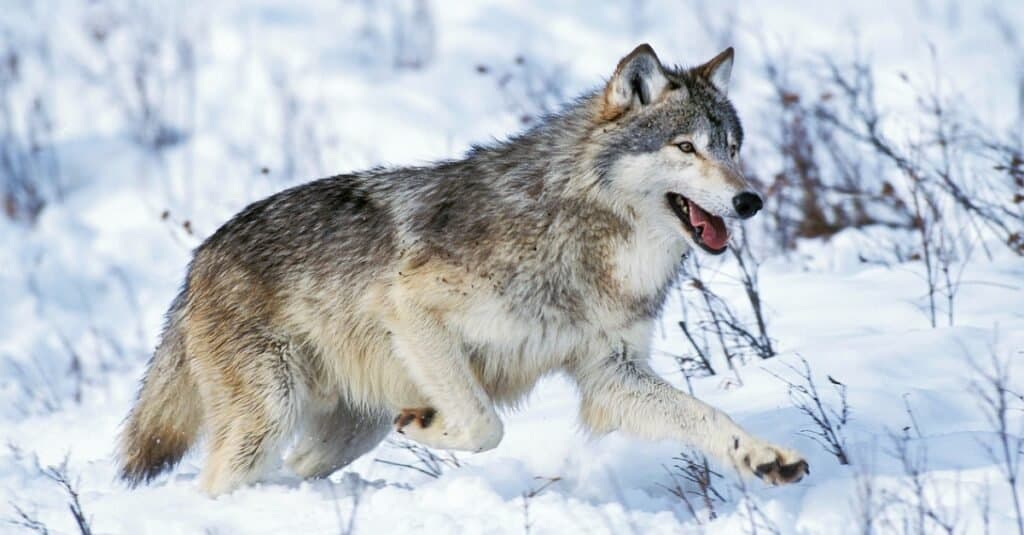
Gray wolves are considered to be elegant predators and highly social animals that form tight, nuclear packs.
©iStock.com/slowmotiongli
This is the only undisputed wolf species and the one with the most members worldwide. Its scientific name is Canis lupus. Also known as the timber wolf, it’s the largest of the wild wolf species.
True to its name, most subspecies of gray wolves are either gray or beige. Some have taken on other colorations more suited to their environment, like the snowy-white Arctic wolf. Most gray wolves weigh between 80 and 160 pounds with a body length of 4-6 feet. They usually stand 2-3 feet in height. Long, pointed snouts and erect ears distinguish this species.
Subspecies include the Great Plains wolf, Arctic wolf, Mackenzie Valley wolf, and the domestic dog (Canis lupus familiarise).
Red Wolf
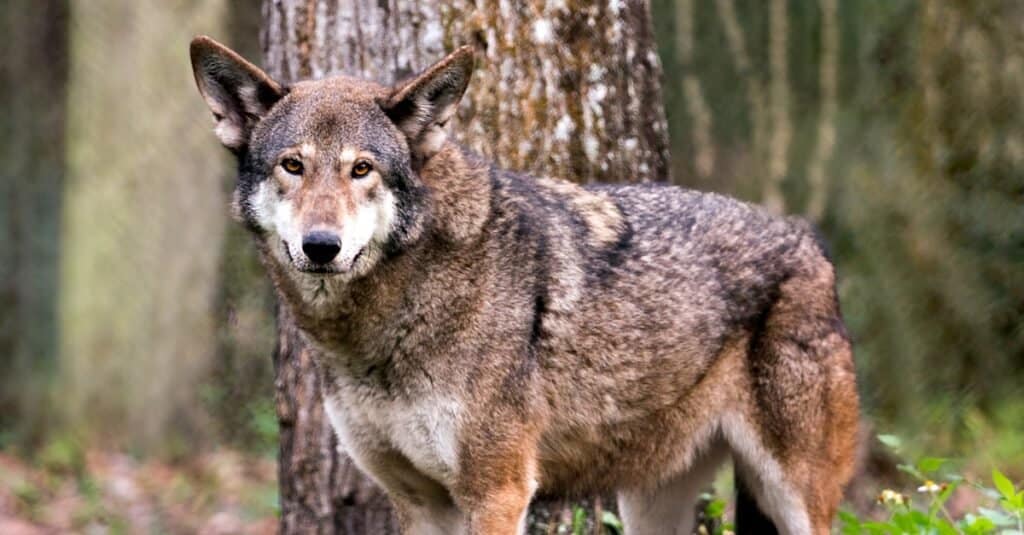
The red wolf is critically endangered, with only about 35 individuals left in the wild.
©Rejean Bedard/Shutterstock.com
The scientific name for the red wolves is Canis rufus. These wolves are smaller than gray wolves but larger than coyotes. Their fur is reddish, tawny, or black. They weigh between 45-85 pounds with an average length of 4 feet, including the tail. They stand about 2 feet high on average.
Eastern Wolf
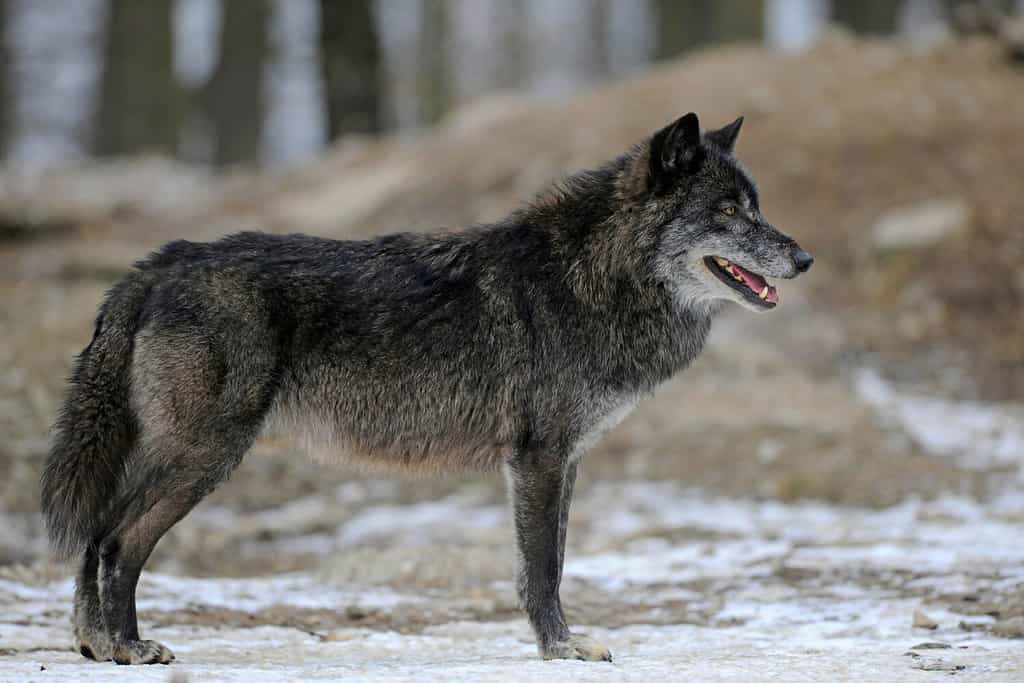
Eastern Canadian wolf
©imageBROKER.com/Shutterstock.com
The scientific name for the eastern wolf is Canis lycaon. Other names include the Eastern Canadian wolf and the Algonquin wolf. This species looks much like the gray wolf in size and color, leading some to speculate that it is actually a subspecies.
How Many Wolves Are Left in the World?

There are an estimated 200,000 to 250,000 wolves left in the world.
©Alan Jeffery/Shutterstock.com
There are an estimated 200,000 to 250,000 wolves left in the world. The vast majority of these are gray wolves. Eastern wolves comprise the next largest group, though they lag far behind the gray wolf. Fewer than 500 remain in the wild.
But the most desperate plight belongs to the red wolf. Only 35 or so members of this species remain in the wild. However, there are about 220 red wolves in captivity with robust breeding programs in place. Conservationists are still determined to bring the red wolf back from the brink of extinction.
Of all the wolf subspecies, the Great Plains wolf is the most common. It goes by the alternate name of the buffalo wolf.
Where Are Wolves Found?
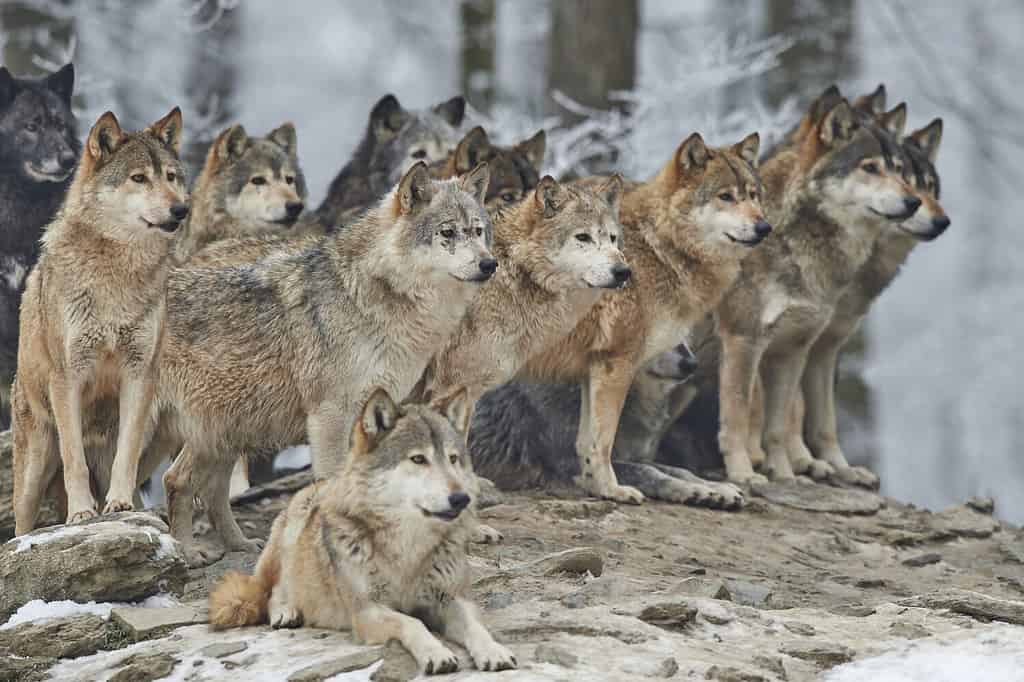
©Michael Roeder/Shutterstock.com
Wolves roam throughout the Northern Hemisphere in North America, Europe, Asia, and North Africa. Due to their preference for cold climates, wolves do not live in the Southern Hemisphere. This includes Antarctica, which they might otherwise enjoy.
The highest concentrations of wolves occur in northern areas like Canada, Alaska, and Russia. Canada, for example, has over 60,000 wolves distributed fairly over its 13 provinces and territories. Russia has as many as 30,000 wolves, the majority in uninhabited or sparsely inhabited regions. About 12,000 wolves live in Alaska, accounting for 2/3 of America’s wolves.
Wolves live in a range of habitats. These include the Arctic tundra, forests, mountains, plains, deserts, and even temperate rainforests. Wolves are generally adaptable, though they have a difficult time adjusting to the presence of humans. Coyotes, on the other hand, tend to thrive under these conditions. The ideal wolf habitat includes plenty of space to roam, abundant prey, ready shelter, and few humans.
Wolf Diet and Predators

Wolves are carnivorous apex predators. They are essential to the food chain, weeding out weak, sick, and old animals. In this way, they strengthen the ecosystem.
A wolf needs to eat between 5-7 pounds of meat every day. However, wolves don’t always have access to a fresh kill. When they do kill a large animal, the members of the pack will “wolf” down as much meat as possible. A single adult wolf can eat over 20 pounds of meat in one sitting.
Wolves prefer to hunt large hoofed mammals. These include deer, elk, caribou, moose, and bison. If the opportunity presents itself, they prey on sheep and goats. Beavers, rabbits, and rodents will do if larger animals are not available.
Wolves are both apex predators and pack animals, two factors that reduce their danger of being eaten. However, they are at risk from predators like grizzly bears, polar bears, Siberian tigers, mountain lions, and humans.
The Biggest Wolf in the World

The biggest wolf on record, a Mackenzie Valley wolf, weighed a whopping 175 pounds.
©iStock.com/slowmotiongli
The biggest wolf species in the world is the Mackenzie Valley wolf. Alternate names are the Northwestern wolf, Canadian, or Alaskan timber wolf. The average male weighs 137 pounds, but that number can go all the way up to 160 pounds. Mackenzie Valley wolves stand 3 feet at the shoulder and stretch as long as 7 feet.
The biggest Mackenzie Valley wolf on record weighed an astonishing 175 pounds! Trappers caught it in Alaska in 1939.
Do Wolves Hunt Humans?
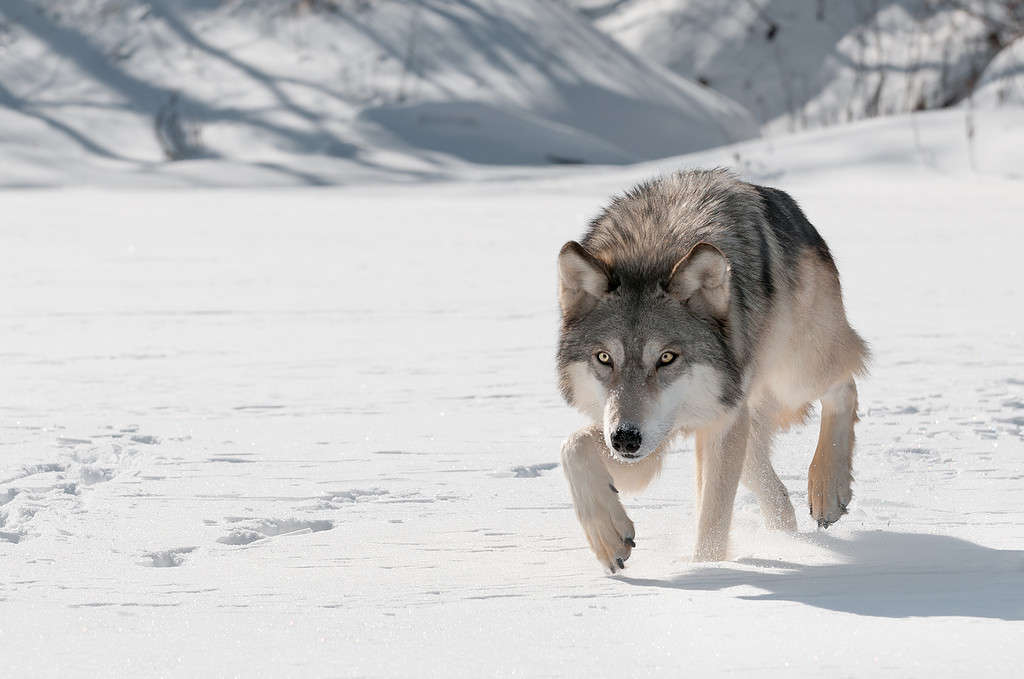
Grey Wolf (Canis lupus) Stalks Forward – captive animal
©Holly Kuchera/iStock via Getty Images
Wolves rarely hunt humans. They tend to be shy of human interaction, avoiding it if at all possible. However, dangerous interactions can occur when humans encroach on a wolf’s territory or appear to be threatening its cubs. Wolves who have become too used to humans are more likely to attack.
Perhaps the most famous case of a wolf killing humans was the Wolf of Gysinge in 19th-century Scandinavia. This wolf killed 11 children and 1 adult before hunters eventually stopped it. A possible theory is that it was domesticated and lost its fear of humans, coming to view them as potential prey.
Are Wolves Endangered?
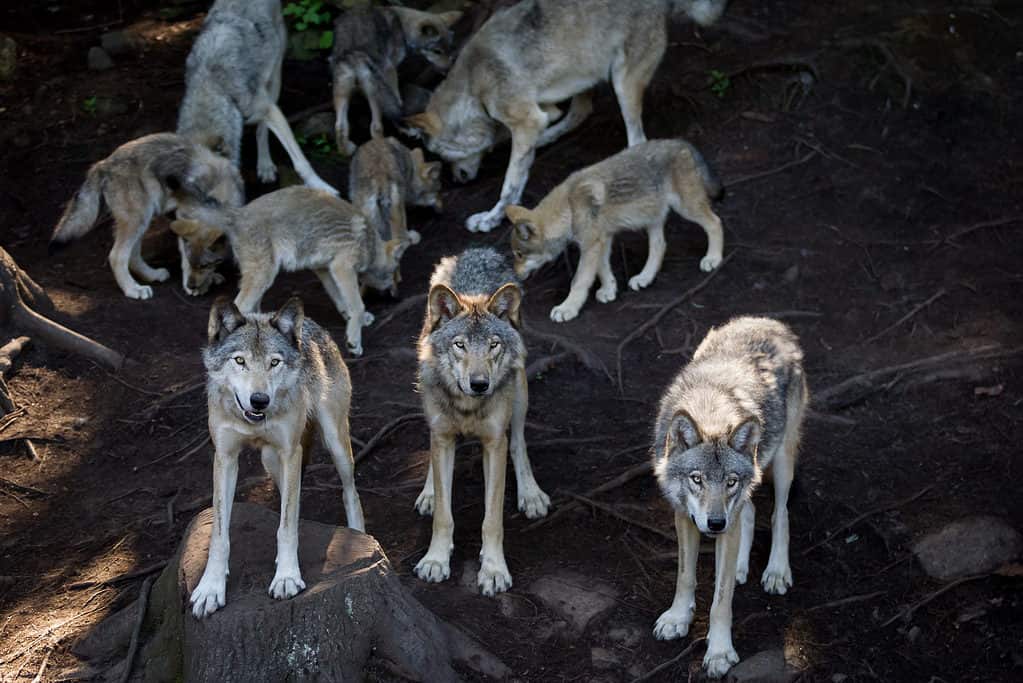
A pack of grey wolves (Canis Lupus).
©PatrickLauzon photographe/Shutterstock.com
Conservationists list wolves in general as a species of least concern with a stable population. This is due to the healthy numbers of gray wolves throughout the world. Red wolves, however, are on the critically endangered list and are on the verge of extinction. Conservationists list eastern wolves as threatened.
Humans hunt wolves worldwide. This is often for sport, as wolves are fearsome predators, and their skins make valuable trophies. Sometimes their skins are even turned into rugs or other decorations. Sometimes, hunters target wolves as pests who prey on livestock. Humans also kill wolves for protection. In some parts of the world, governments protect wolves and even compensate farmers for lost livestock. In other parts of the world, this protection and compensation aren’t in place.
Regardless of the species, wolves remain majestic and mysterious predators. The next time you hear a wolf howl, you’ll have a better appreciation for its nature – and the nature in which it thrives.
The photo featured at the top of this post is © iStock.com/rogertrentham
Thank you for reading! Have some feedback for us? Contact the AZ Animals editorial team.







